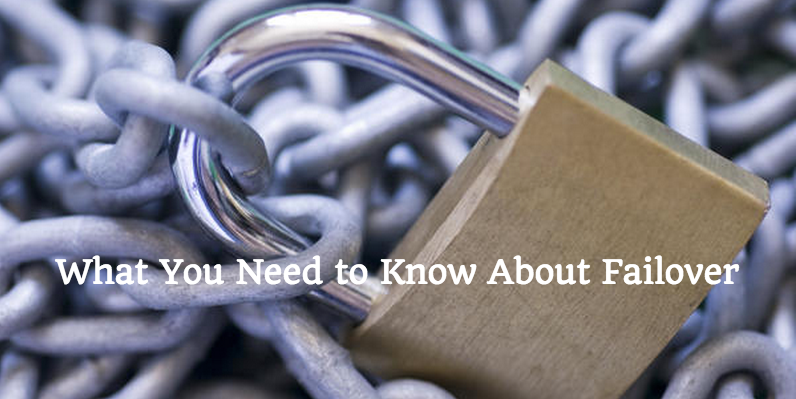
In an active server system, whether it’s a single machine or an entire network, every single component must function properly in order for the system to operate as it is intended. But what if one integral part – say, for instance, the processor – suddenly fails? Shouldn’t the system be designed to continue to function despite the error within this single component?
What if that system was used to run an ecommerce website or a popular blog? Should the owner of the site be penalized with downtime and the potential for lost customers just because a single component has failed and caused the entire system to crash? Unfortunately, this is an all-too-common scenario in the hosting world. People expect immediate access to their favorite websites and apps, and any downtime can be cause for those end users to move on to some other site or app. That’s why failover is so important.
So What Is Failover?
Failover is the practice of implementing secondary measures to ensure that systmes continue to function normally, even in the event that a given component may fail. Basically, it’s an operational mode where the functions of each system component can be taken over by a secondary system when the primary component fails or becomes unavailable. This may mean entire backup systems are in place to prevent unexpected component failure from tanking the entire system or network. Failover is one of the major benefits of using a CDN.
Because servers are such a critical part of providing data around the clock, systems engineers must constantly implement new failover capabilities to ensure the highest possible degree of reliability. Does implementing failover processes mean that you no longer have to monitor your system or network? Of course not – it simply buys you some time in the event that something does go wrong. Even with failover in place, damaged, failing or broken components should still be replaced immediately.
How Does Failover Work?
A “heartbeat” system is used in failover automation. In this system, two servers are connected through a separate cable or a network connection. For as long as there is a “pulse” or “heartbeat” detected between the main server and the backup server, the backup won’t assume any of the responsibilities of the main server. Even the slightest alteration in the “heartbeat” of the primary component sends the backup into rescue mode.
Some failover systems are purely automatic as illustrated above. But there are some systems that need human intervention. This is commonly called a switchover, which basically functions like a failover but instead of the backup automatically kicking in, human interaction is needed for it to push through.
Failovers are important, particularly in mission-critical systems which need to be constantly accessible. Its main purpose is to ensure data and information are still accessible by an end user even if a system failure in the main system occurs.

